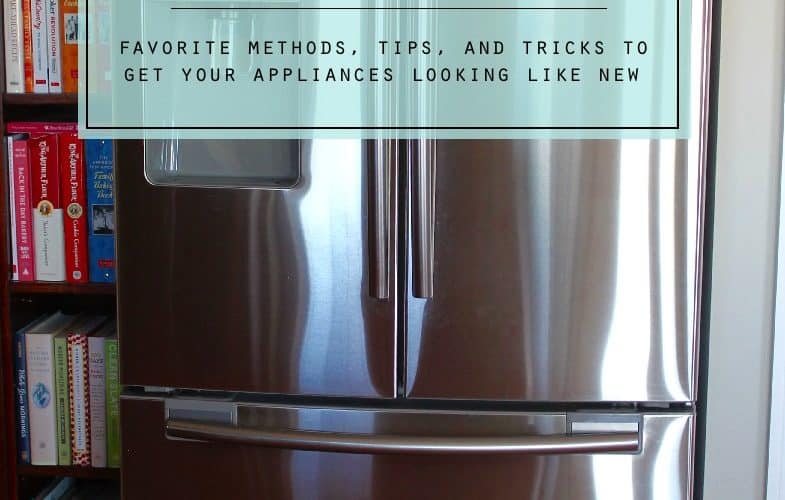Stainless steel appliances are sleek and sexy choices for your new modern kitchen but they do show fingerprints, smudges and grease spots. There’s a reason that stainless steel is used in commercial kitchens. It is easy to clean once you know how. How do you clean stainless steel?
There are a few things you can use that work very well. No matter which cleaner you use always rinse with clear water and dry with a soft cloth when done, and always wipe in the direction of the grain.
- Always try just plain water first! Use on a soft cloth or sponge, then wipe dry with a soft dry cloth.
- The old bartender’s trick of using club soda to remove fingerprints and heat stains is probably the easiest. The trick is to rinse with water and dry with a soft cloth when done.
- Ammonia works well on grease spots. Dilute the ammonia with water and rub in, then rinse with water, and buff dry with a soft cloth. Glass cleaner, which usually contains ammonia, is a good alternative if you don’t have ammonia handy. Even with glass cleaner you need to rinse with water and dry.
- If you don’t like ammonia, use white vinegar, which I keep in a spray bottle, mixed 50/50 with water. Rinse with water, and wipe dry.
- Simple dish soap works well for many cleanups. You don’t need much, just a bit, diluted with water. As always, rinse with water and buff dry.
- For stubborn fingerprints use rubbing alcohol. Follow with a clean water rinse and wipe dry.
- Though abrasion isn’t a generally a good idea, if you have a stubborn bit of stuck-on stuff, use a paste of baking soda and water and scrub gently. Elbow grease is the best remedy. Rinse well with water and buff dry.
- Using a plastic scrubber pad such as a Scotch-Brite pad is okay on older stainless steel, but always rub with the grain. You may want to test in a hidden spot, since some highly polished stainless steel may not be amenable to this treatment. Some of the newer scratch-resistant coatings on stainless steel don’t respond well to plastic scrubbers.
Don’t ever do these things!
- Don’t use steel wool.
- Don’t use cleanser or any other abrasive or scouring powder.
- Don’t use chlorine bleach in any form.
- Don’t use a stiff brush of any kind.
- Don’t leave a wet sponge or rag on a stainless steel surface.
There are commercial polishes designed specifically for stainless steel that will protect your stainless steel and afford some scratch and fingerprint protection. Follow the instructions that come with the product.
If you do get a rust spot, there is an easy way to clean it. Create a paste from a small amount of lemon juice and some cream of tartar. Rub it into the rust spot vigorously. For a stubborn rust spot, try leaving the solution on the spot for an hour. As always, rinse with clear water and buff dry with a soft cloth.
If you follow all the instructions and you still have some spotting and staining, it may not be your fault, it may be that your water is hard, and the minerals are leaving a deposit on your beautiful stainless steel. The best remedy for this is to make sure to buff completely dry after cleaning.
Take care with your stainless steel appliances and they will look beautiful for many years.
<>



